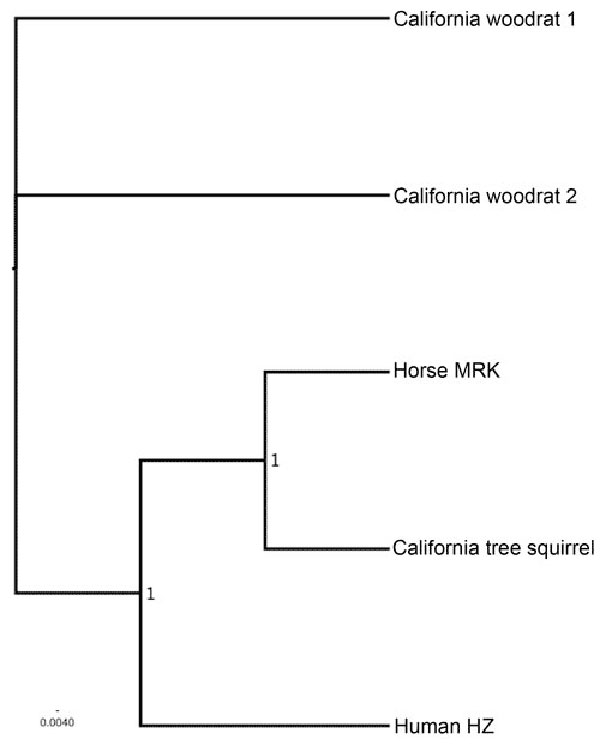Volume 15, Number 5—May 2009
Letter
Distinct Ecologically Relevant Strains of Anaplasma phagocytophilum
Appendix Figure

Appendix Figure. Bayesian phylogeny of the omp1n gene of A. phagocytophilum, with 100,000 iterations. Taxa are 2 woodrats from northern California, the human strain HZ, the California horse strain MRK, and a squirrel from Santa Cruz, CA. Scale bar indicates number of nucleotide substitutions per site.
Page created: December 16, 2010
Page updated: December 16, 2010
Page reviewed: December 16, 2010
The conclusions, findings, and opinions expressed by authors contributing to this journal do not necessarily reflect the official position of the U.S. Department of Health and Human Services, the Public Health Service, the Centers for Disease Control and Prevention, or the authors' affiliated institutions. Use of trade names is for identification only and does not imply endorsement by any of the groups named above.